History
In the wake of the Battle of Fort Sumter and President Abraham Lincoln's subsequent call for 75,000 volunteers in the spring of 1861, the Commonwealth of Pennsylvania began organizing regiments for ninety days' service in the Union Army. As companies of volunteers and militiamen began arriving in the state capital at Harrisburg, the men were gathered north of the city at Camp Curtin. On April 20, 1861, ten companies of volunteers were organized into a regiment and dubbed the 2nd Pennsylvania Infantry. Most of the recruits came from central and south-central Pennsylvania. The next day they were sent to Washington but their train was halted near Cockeysville, Maryland because Secessionists had burned a railroad bridge as part of the Baltimore Riot. The regiment bivouacked in a field near the train for two days, worrying about further violence by the Secessionists. After the threat passed the regiment was sent to York, Pennsylvania arriving on April 24. They spent the next month drilling and training.

The Battle of Fort Sumter was the bombardment of Fort Sumter near Charleston, South Carolina by the Confederate States Army, and the return gunfire and subsequent surrender by the United States Army, that started the American Civil War. Following the declaration of secession by South Carolina on December 20, 1860, its authorities demanded that the U.S. Army abandon its facilities in Charleston Harbor. On December 26, Major Robert Anderson of the U.S. Army surreptitiously moved his small command from the vulnerable Fort Moultrie on Sullivan's Island to Fort Sumter, a substantial fortress built on an island controlling the entrance of Charleston Harbor. An attempt by U.S. President James Buchanan to reinforce and resupply Anderson using the unarmed merchant ship Star of the West failed when it was fired upon by shore batteries on January 9, 1861. South Carolina authorities then seized all Federal property in the Charleston area except for Fort Sumter.
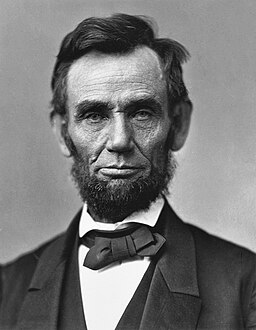
Abraham Lincoln was an American statesman and lawyer who served as the 16th president of the United States from 1861 until his assassination in April 1865. Lincoln led the nation through the American Civil War, its bloodiest war and its greatest moral, constitutional, and political crisis. He preserved the Union, abolished slavery, strengthened the federal government, and modernized the U.S. economy.
On April 15, 1861, at the start of the American Civil War, the President of the United States, Abraham Lincoln, called for a 75,000-man militia to serve for three months following the bombardment and surrender of Fort Sumter. Some slave states refused to send troops against the neighboring Deep South slave states of South Carolina, Mississippi, Florida, Alabama, Georgia, Louisiana, and Texas with the result that most such states in the Upper South of Virginia, Arkansas, North Carolina, and Tennessee also declared secession from the United States and joined the Confederate States. Missouri and Kentucky did not fully secede themselves from Union control but they were admitted by the Confederacy as the 12th and 13th states respectively while Maryland and Delaware stayed in the Union throughout the duration of the war.
On June 1, the 2nd Pennsylvania was sent to Chambersburg where it was placed in General George Wynkoop's second brigade of General William Keim's division in the Department of Pennsylvania commanded by General Robert Patterson. Within a few days a force of over 8,000 men was gathered around Chambersburg, mostly Pennsylvania and New York three-month regiments. Patterson's army was tasked with advancing into the Shenandoah Valley, engaging with General Joseph E. Johnston's Confederate army stationed there, and preventing them from reinforcing Beauregard's army defending Manassas Junction, Virginia. On June 16 the 2nd Pennsylvania advanced from Chambersburg to Hagerstown, Maryland and then to Funkstown, where they remained until late June.

Chambersburg is a borough in and the county seat of Franklin County, in the South Central region of Pennsylvania, United States. It is in the Cumberland Valley, which is part of the Great Appalachian Valley, and 13 miles (21 km) north of Maryland and the Mason-Dixon line and 52 miles (84 km) southwest of Harrisburg, the state capital. According to the United States Census Bureau, Chambersburg's 2010 population was 20,268. When combined with the surrounding Greene, Hamilton, and Guilford Townships, the population of Greater Chambersburg is 52,273 people. The Chambersburg, PA Micropolitan Statistical Area includes surrounding Franklin County, and in 2010 included 149,618 people.
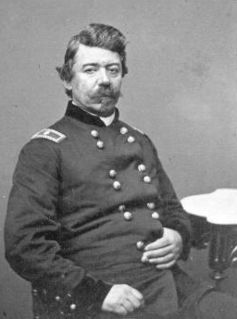
William High Keim was a Republican member of the U.S. House of Representatives from Pennsylvania, as well as a general in the Union Army during the American Civil War.

Robert Patterson was an Irish-born United States major general during the American Civil War, chiefly remembered for inflicting an early defeat on Stonewall Jackson, but crucially failing to stop Confederate General Joseph E. Johnston from joining forces with P. G. T. Beauregard at the First Battle of Bull Run. He is still blamed for this historic Union defeat.
Patterson's army crossed the Potomac River on July 2 at Falling Waters and advanced toward Martinsburg, Virginia. Just north of Martinsburg they encountered a brigade of Virginians commanded by Brigadier General Thomas J. Jackson. What resulted was a skirmish known as the Battle of Hoke's Run. The 2nd Pennsylvania did not take part in the skirmish, but were in close supporting distance and arrived on the battlefield shortly after Jackson retreated. From July 3 to July 15 the 2nd Pennsylvania took part in the occupation of Martinsburg. Then they joined with the rest of the army on an advance on Bunker Hill. General Patterson had, by this time, lost his nerve and was worried that he faced a much larger Confederate force. He pulled his army back to Charlestown where they entrenched and waiting for, what Patterson believed, the impending Confederate attack. Patterson had been entirely fooled by Johnston, who transferred the bulk of his army from the Shenandoah Valley to Manassas Junction where they played a decisive part in the Confederate victory at the Battle of Bull Run. General Patterson retreated to Harpers Ferry, Virginia and the next day was relieved of command.

The Potomac River is found within the Mid-Atlantic region of the United States and flows from the Potomac Highlands into the Chesapeake Bay. The river is approximately 405 miles (652 km) long, with a drainage area of about 14,700 square miles (38,000 km2). In terms of area, this makes the Potomac River the fourth largest river along the Atlantic coast of the United States and the 21st largest in the United States. Over 5 million people live within the Potomac watershed.
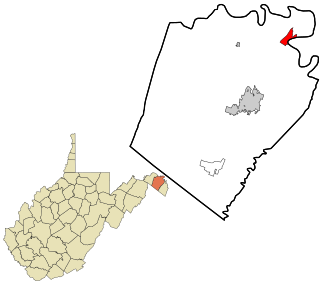
Falling Waters is a census-designated place (CDP) on the Potomac River in Berkeley County, West Virginia. It is located along Williamsport Pike north of Martinsburg. According to the 2010 census, Falling Waters has a population of 876. An 1887 Scientific American article claimed that the first U.S. railroad was built in Falling Waters in 1814.

Martinsburg is a city in and the county seat of Berkeley County, West Virginia, United States, in the tip of the state's Eastern Panhandle region in the lower Shenandoah Valley. Its population was 17,687 in the 2016 census estimate, making it the largest city in the Eastern Panhandle and the ninth-largest municipality in the state. Martinsburg is part of the Hagerstown-Martinsburg, MD-WV Metropolitan Statistical Area.
The end of their three-months service having expired, the 2nd Pennsylvania was sent back to Harrisburg by train and mustered out of service on July 26, 1861.

The First Battle of Bull Run, also known as the First Battle of Manassas, was the first major battle of the American Civil War and was a Confederate victory. The battle was fought on July 21, 1861 in Prince William County, Virginia, just north of the city of Manassas and about 25 miles west-southwest of Washington, D.C. The Union's forces were slow in positioning themselves, allowing Confederate reinforcements time to arrive by rail. Each side had about 18,000 poorly trained and poorly led troops in their first battle. It was a Confederate victory, followed by a disorganized retreat of the Union forces.

The Battle of Hoke's Run, also known as the Battle of Falling Waters or Hainesville, took place on July 2, 1861, in Berkeley County, Virginia as part of the Manassas Campaign of the American Civil War. Notable as an early engagement of Confederate Colonel Thomas J. Jackson and his Brigade of Virginia Volunteers, nineteen days before their famous nickname would originate, this brief skirmish was hailed by both sides as a stern lesson to the other. Acting precisely upon the orders of a superior officer about how to operate in the face of superior numbers, Jackson's forces resisted General Robert Patterson's Union forces briefly and then slowly retreated over several miles.
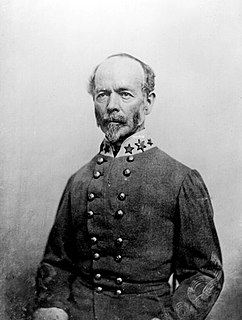
The Army of the Shenandoah was an army of the Confederate States of America during the American Civil War; it was organized to defend the Shenandoah Valley of Virginia in the early months of the war. The army was transferred to reinforce the Confederate Army of the Potomac at the First Battle of Bull Run, which was its only major action. After the battle, the army was merged into the Army of the Potomac.
The Department of the Susquehanna was a military department created by the United States War Department during the Gettysburg Campaign of the American Civil War. Its goal was to protect the state capital and the southern portions of the commonwealth of Pennsylvania, and to deny the Confederate army passage across the vital Susquehanna River.
The 14th West Virginia Volunteer Infantry Regiment was an infantry regiment that served in the Union Army during the American Civil War.
The 54th Pennsylvania Volunteer Infantry was an infantry regiment which served in the Union Army during the American Civil War.
The 20th Pennsylvania Volunteer Infantry was a volunteer infantry regiment in the Union Army during the American Civil War. One of the Keystone State's three-month service regiments, this unit's tour of duty took its members from Philadelphia to South Central Pennsylvania and then southeast to Maryland and Virginia.
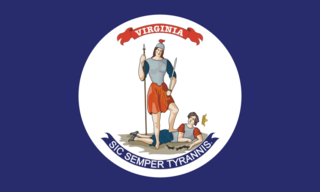
22nd Virginia Infantry was a Confederate regiment during the American Civil War. Its commander was George S. Patton, Sr., the grandfather of World War II General George S. Patton.
Kenton Harper was an American newspaper editor, soldier, Indian agent, plantation owner, banker and politician. An officer of the Virginia militia then U.S. Army during the Mexican–American War, Harper later became a Confederate general officer during the American Civil War, and reportedly helped nickname Stonewall Jackson.

The 1st Virginia Volunteer Infantry Regiment was an infantry regiment raised in the Commonwealth of Virginia for service in the Confederate States Army during the American Civil War. It fought mostly with the Army of Northern Virginia.

The 2nd Virginia Volunteer Infantry Regiment was an infantry regiment raised in today’s western Virginia and what became West Virginia during the American Civil War for service in the Confederate States Army. It would combine with the 4th, 5th, 27th, and 33rd Virginia infantry regiments and the Rockbridge Artillery Battery and fight as part of what became known as the Stonewall Brigade, mostly with the Army of Northern Virginia.

The 36th Virginia Volunteer Infantry Regiment was an infantry regiment mostly raised in the Kanawha Valley for service in the Confederate States Army during the American Civil War. It fought mostly in western Virginia, Tennessee, and Kentucky.

The Manassas campaign was a series of military engagements in the Eastern Theater of the American Civil War.

Jacob C. Higgins (1826–1893) was a native commander of Pennsylvania troops who participated in both major military conflicts of his time, the Mexican–American War and the American Civil War. Among his Civil War commands, he guided the 125th Pennsylvania Infantry regiment under heavy fire during the 'Bloodiest Day in American History' at the Battle of Antietam and likewise during the 'Second Bloodiest Day of the Civil War,' May 3, 1863, at the Battle of Chancellorsville. Following the muster out and return home of the 125th PA, the Gettysburg Campaign sent cavalry under Confederate General John D. Imboden to threaten vital railroad resources at Altoona and iron production facilities in the Juniata River watershed; in response, Emergency Militia was organized by Colonel Higgins and minimized this northwestern incursion.
The Department of Pennsylvania was a large military unit in the Union Army at the outset of the American Civil War. Established on April 27, 1861, its territory consisted of Pennsylvania, Delaware, and all of Maryland not embraced in the Department of Annapolis and the Department of Washington. Its remnants were absorbed into the short-lived Department of the Shenandoah on July 19, 1861, which also absorbed the Department of Maryland on July 25, and on August 24 was merged into the Department of the Potomac.
The 75th Regiment Pennsylvania Volunteer Infantry was a unit of the Union Army during the American Civil War. It was composed almost entirely of German-speaking residents of Philadelphia and newly arrived German immigrants. Total enrollment, over the course of the war, was 1,293 officers and men. The 75th Pennsylvania participated in several major battles including Second Bull Run, Chancellorsville, and Gettysburg. The regiment was transferred to the Western Theater in September, 1863. There, it participated in operations in Tennessee, before it was mustered out of service on September 1, 1865, following the close of the war.

The 1st Pennsylvania Infantry was an infantry regiment in the Union Army during the American Civil War that served for three months at the beginning of the war.

The 20th Pennsylvania Cavalry was a cavalry regiment of the Union Army which fought during the American Civil War. Also known as the 181st Pennsylvania Volunteers, it was initially led by Colonel John E. Wynkoop, Lieutenant Colonel William Rotch Wister, and Major Samuel W. Comly.

The 201st Regiment Pennsylvania Volunteer Infantry was an infantry regiment of the Union Army in the American Civil War. Raised in the Harrisburg, Pennsylvania area during August 1864, the regiment initially guarded the Manassas Gap Railroad and detachment elements on provost duty in Virginia. The regiment then moved to Alexandria in November, where it performed guard and escort duty. After the end of the war the main body of the regiment garrisoned Fort Delaware before mustering out in mid-1865.

The 202nd Regiment Pennsylvania Volunteer Infantry was an infantry regiment of the Union Army in the American Civil War. Raised in the Harrisburg area and the Coal Region in August and September 1864, the regiment was sent to the Manassas Gap Railroad to guard it against the attacks of Confederate partisan rangers led by John Mosby. Following the Union victory at Battle of Cedar Creek, the regiment helped break up the now unneeded railroad and moved to Alexandria to guard the railroad there. After the end of the war, the regiment served in the Coal Region to suppress labor unrest, and was mustered out in mid-1865.





















